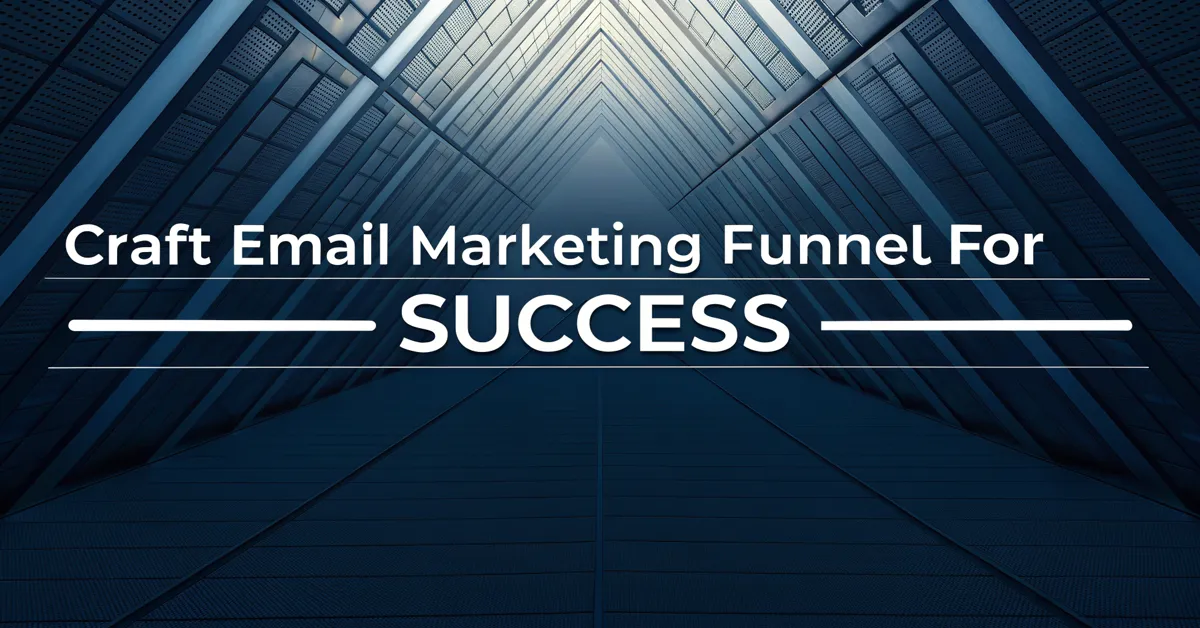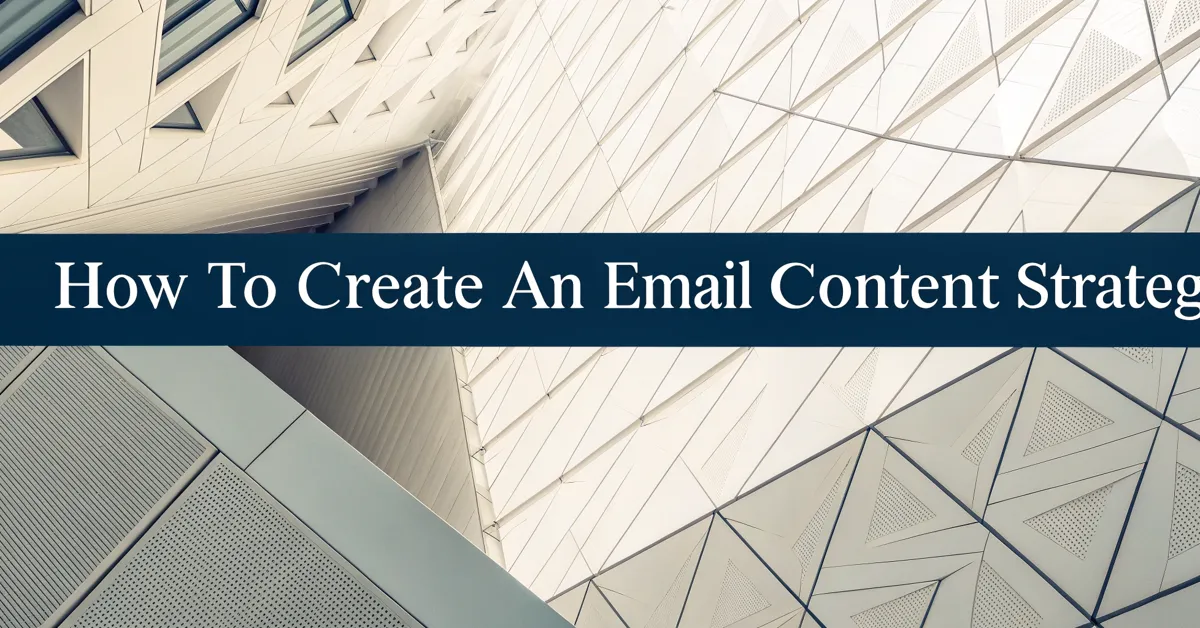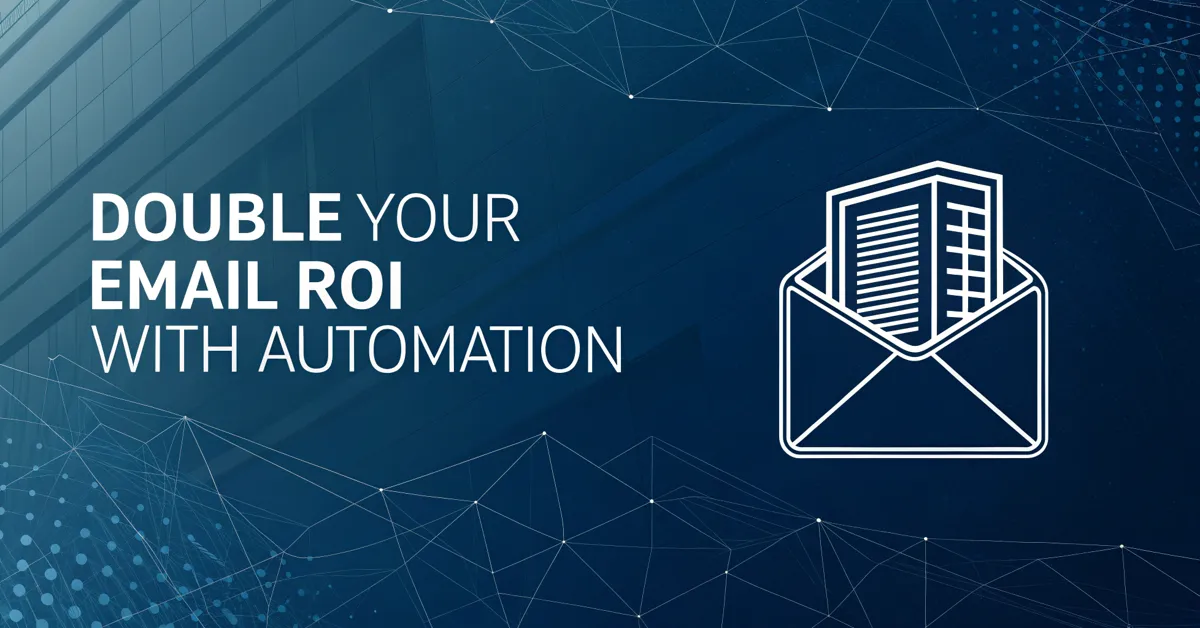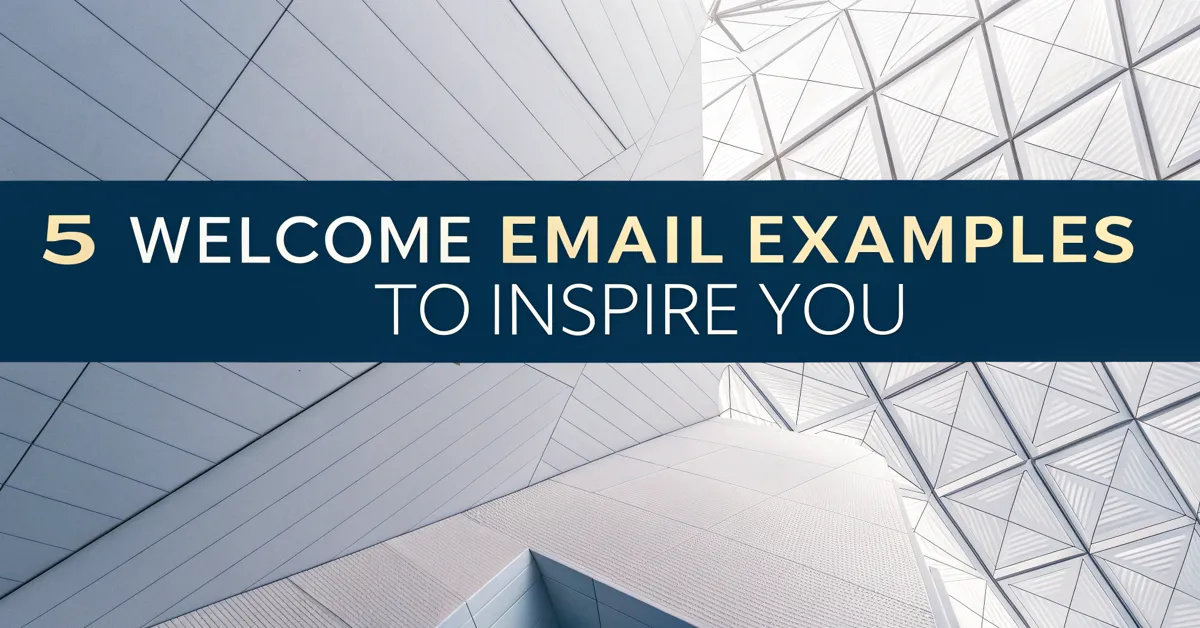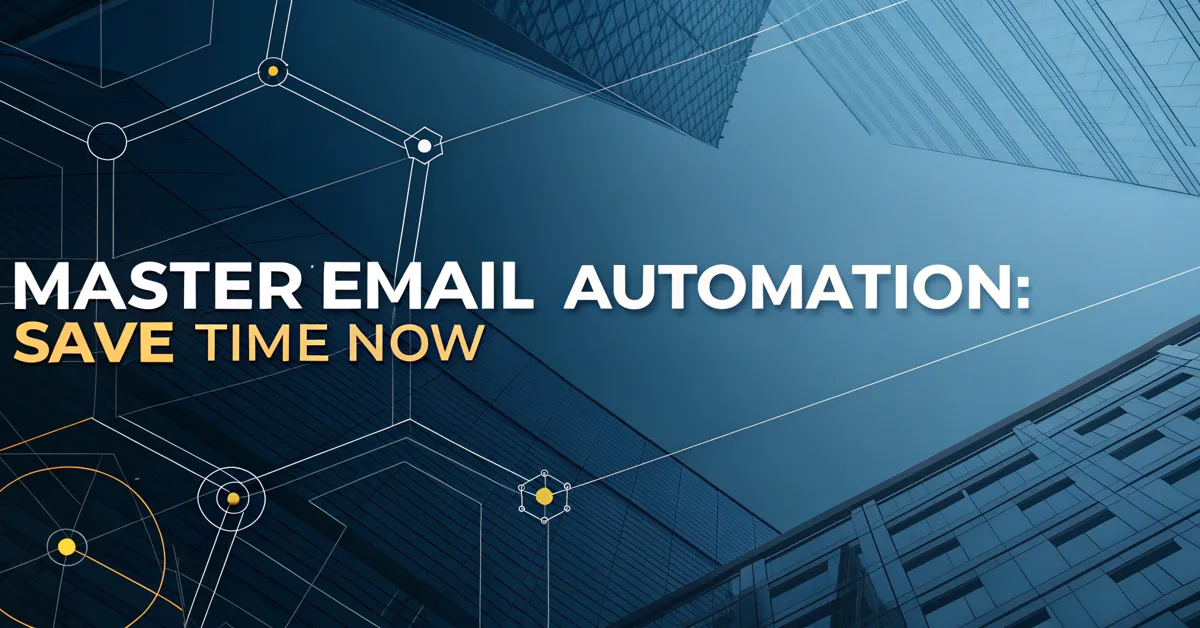Email marketing can feel like a shot in the dark. You craft a message, hit send, and hope for the best. But what if you could guide your leads down a clear path, turning them from casual browsers into loyal customers? You can, with a well-built email marketing funnel. It’s not magic, it’s strategy. This article will walk you through how to build one that works.
What is an Email Marketing Funnel?
An email marketing funnel is not a one-size-fits-all thing. Think of it as a series of emails. Each email works to move people closer to a final goal. This goal is often a sale. But it can also be a sign-up, a download, or some other step.
The funnel gets its name from its shape. At the top, you have a wide pool of people. These are folks who have shown some interest in your brand. As they move down the funnel, some will drop off. The ones left at the bottom are your best leads. They’re more likely to make a purchase.
This funnel is not just a set of emails. It is a planned approach. Each email is designed to match where a person is in their customer journey. It is about sending the right message at the right time.
Think of it like this:
- Top of the Funnel (TOFU): This is where new leads enter. They might have signed up for your newsletter or downloaded a free guide. They’re just starting to learn about your brand.
- Middle of the Funnel (MOFU): Here, leads are more aware of their needs and pain points. They are looking for solutions.
- Bottom of the Funnel (BOFU): This is where the best leads are. They are ready to buy. They’re just looking for a reason to choose you over a competitor.
This is the main idea. Now, let’s take a deeper look at the details.
Why You Need an Email Marketing Funnel
You might wonder if you even need an email marketing funnel. Why not just send a single email and hope for the best? Well, here’s the thing. People do not buy right away. It often takes time. They need to know that they can trust you. And that your product will fix their problems.
An email marketing funnel gives you a system to build this trust. It allows you to:
- Nurture Leads: Guide your leads through the sales process step by step.
- Target Your Messages: Send custom emails based on where each lead is in their journey.
- Automate Your Marketing: Set up email sequences that run on their own.
- Improve Conversions: Turn leads into sales with targeted messaging.
- Save Time and Effort: Work less on repetitive tasks and focus more on strategy.
In short, an email marketing funnel helps you work smarter. Not harder. You connect with leads in a real way. And you turn those leads into customers. That’s the power of a funnel.
How to Build Your Email Marketing Funnel
Now comes the main part. How do you build this funnel? Let’s break it down into steps.
1. Define Your Goals
First, you need to know what you want to achieve. Do you want to sell a product? Get people to sign up for a free trial? Download a guide?
Your goals will shape each step of your funnel. So pick goals that are clear and easy to measure. For instance, don’t just say “I want more sales.” Say “I want a 10% increase in sales of product X within the next quarter.”
Having a clear goal will:
- Guide your efforts: You’ll know what direction to move.
- Help measure success: You’ll know if your funnel is working.
- Allow for tweaks: You can adjust things that are not working well.
2. Identify Your Audience
Who are you talking to? What are their needs and wants? You need a clear idea of your target audience. This will help you create messages that grab their attention.
Think about:
- Demographics: Age, sex, job, location, etc.
- Pain Points: What are they struggling with?
- Goals: What are they hoping to achieve?
- Buying Habits: How do they shop?
You can get this info through:
- Surveys: Send them out to your current list.
- Analytics: Look at your web traffic.
- Customer feedback: Talk to people who have bought from you.
Use this info to build a clear picture of who you are talking to. This will be key to making your funnel work.
3. Create Lead Magnets
A lead magnet is something of value you give away for free. In return, you get someone’s email address. It is the first hook that pulls people into your funnel.
Think of lead magnets as a teaser. They should match the needs of your target audience. And show off your expertise.
Some common lead magnets:
- Ebooks: Give tips or insights about a topic.
- Checklists: A step-by-step guide for a task.
- Templates: Use this for easier workflow.
- Webinars: Live talks on topics your audience wants to learn about.
- Free trials: Let people use your product before they pay.
The best lead magnets are those that solve a small problem right away. They also lead into the next part of your funnel.
4. Build Your Email List
Now that you have lead magnets, you need places to add them. You need to build your email list. It is the base of your funnel. It has to be done well.
Here are some ways to grow your list:
- Website Opt-ins: Place signup forms on your site. Use pop-ups and sidebar forms.
- Landing Pages: Build a page that is just for your lead magnet.
- Social Media: Add links to your signup form on your posts.
- In-Person Events: Collect emails at trade shows and other events.
Be sure to offer value to those signing up. And be clear about what you will send them. Make sure to honor your word. Be consistent and always act honestly.
5. Map Your Funnel Stages
With your list growing, you can move onto how emails move down the funnel. Each stage needs its own set of emails. Let’s look at this further.
- TOFU (Awareness): Here, leads are just getting to know you. Your emails should focus on education and building trust. Share useful content. Show that you know what you are talking about. Don’t sell too hard.
- MOFU (Consideration): In this phase, leads know about their needs. They are looking for solutions. You need to show how you can help them. Talk about the things you do and why you are the best.
- BOFU (Decision): This is where people are ready to buy. You need to give them a final push. Show them why they should choose you. And give them clear ways to make a purchase.
6. Craft Your Emails
Now, the actual work starts. You need to write emails for each stage. Each email needs to be targeted and useful. Use short sentences and easy to grasp words. Here’s how:
- Welcome Emails (TOFU): Send these right after someone signs up. Thank them for joining your list. Give them the lead magnet they asked for. Tell them what to expect from you.
- Content Emails (TOFU): Share your best blog posts, videos, and other useful content. Keep them informed.
- Problem Awareness Emails (MOFU): Talk about the pain points your leads have. Show how your product can fix them.
- Solution Emails (MOFU): Tell them more about what you offer. Talk about what sets you apart from other brands.
- Case Study Emails (MOFU): Show how your product has helped others. People trust stories.
- Testimonial Emails (MOFU): Let other users share their thoughts about your brand.
- Sales Emails (BOFU): Make a clear offer. Give people a reason to buy now. Like limited time deals or discounts.
- Follow-up Emails (BOFU): If someone did not buy after the first sales email, send a follow-up. Maybe the same offer needs a second look. Or maybe you can answer a doubt they might have.
For your emails, keep it short. Use simple words. Include links back to your site. And always provide real value.
7. Automate Your Funnel
Once you have emails for each stage, you need a way to send them. This is where automation comes in. Use email marketing software. It will handle the job of sending emails based on specific actions a user takes.
Set up triggers based on how people engage with your emails. So they move down the funnel. For example, if someone opens an email about case studies, move them to your sales email sequence.
Email automation means less work for you. And ensures that each lead gets the right message at the right time.
8. Track Your Results
Once your funnel is running, you need to keep track of its success. Are people opening your emails? Are they clicking on your links? Are they buying your products?
Keep an eye on:
- Open Rates: How many people are opening your emails?
- Click-Through Rates (CTR): How many people are clicking links in your emails?
- Conversion Rates: How many people are doing the action you want? Like buying something.
- Unsubscribe Rates: How many people are leaving your list?
Use these numbers to see what works and what needs to be changed.
9. Test and Optimize
No funnel is perfect from day one. You need to keep testing and making it better. Use A/B tests to check different emails. Experiment with:
- Subject Lines: Try different ways to get people to open emails.
- Email Content: See what style of emails people like best.
- Call to Actions (CTAs): Test different words to get people to act.
- Email Timing: Check when is best to send your emails.
Test one thing at a time. Keep an eye on the numbers. And make small tweaks to improve results.
10. Maintain Your List
Your email list is always a work in progress. Keep it up to date.
- Clean Your List: Remove people who do not open or click your emails. They are not good leads.
- Segment Your List: Divide your leads into groups. Send emails that match their interests.
- Re-Engage Leads: Try to bring back those that did not open your emails in a while.
Keep your list fresh and clean. So your funnel will keep working well.
Examples of Email Marketing Funnels
Let’s look at some examples of how you could use an email marketing funnel.
Example 1: E-commerce Store
Imagine you sell custom art prints online. Here is what your funnel might look like:
- Lead Magnet: Offer a free guide on how to style art prints in your home.
- TOFU Emails:
- Welcome email with the guide.
- Email with blog posts about home decor.
- Email with ideas for different types of prints.
- MOFU Emails:
- Email that shows what makes your art unique.
- Email with case studies of how people have used your prints.
- Email that shows customer reviews.
- BOFU Emails:
- Email with a special discount on your art.
- Email that talks about a limited edition print.
- Email that reminds them about the discount and time left.
Example 2: Online Course
Say you sell an online course about email marketing. Your funnel could be:
- Lead Magnet: A free webinar about email marketing basics.
- TOFU Emails:
- Welcome email that confirms their webinar signup.
- Email with articles about the latest trends in marketing.
- Email with quick tips for beginners.
- MOFU Emails:
- Email that talks about the common mistakes in marketing.
- Email that shows the things they can expect from your online course.
- Email with a case study on how they can grow their business.
- BOFU Emails:
- Email with a launch discount for your course.
- Email with special bonus if they signup this week.
- Email with last minute reminder.
Example 3: SaaS Company
Let’s say you offer project management software. Your funnel could look like this:
- Lead Magnet: A free trial of your software.
- TOFU Emails:
- Welcome email with instructions on how to use their free trial.
- Email that links to blog posts that share tips for project management.
- Email that links to videos of tutorials.
- MOFU Emails:
- Email that shows how your product is different from others.
- Email with tips on how to use the tools you provide to help solve problems.
- Email with reviews.
- BOFU Emails:
- Email with special deal if they choose to sign up for a paid account.
- Email that reminds them about their free trial ends and it’s time to switch to paid.
- Email with final offer that is available for a short time.
These examples can guide you in creating your own funnel. Keep your goals and your target audience in mind as you build your system.
Tools for Building Your Email Marketing Funnel
You don’t have to do all of this by hand. There are many tools that will make it much easier. Here are some things to look for:
- Email Marketing Software: Choose something that offers automation, A/B testing, and reporting. Some names: Mailchimp, ConvertKit, and ActiveCampaign.
- Landing Page Builders: Tools that help you create opt-in pages. Some options: Leadpages, Unbounce, and Instapage.
- Customer Relationship Management (CRM) Systems: Use these to keep track of your leads. Some choices: HubSpot, Salesforce, and Zoho CRM.
- Analytics Tools: Help you keep track of what people are doing. Like Google Analytics or Semrush.
Using the right tools can save you time. And improve the success of your funnel.
Key Takeaways For Building An Effective Email Marketing Funnel
An email marketing funnel is not just an idea. It’s a system that can change how you work. It guides your leads in a way that makes sense. It also saves you from the same old work. It turns leads into sales.
To build a successful email marketing funnel:
- Start with a clear goal.
- Know who your target audience is.
- Create lead magnets that offer real value.
- Build a healthy email list.
- Map out clear steps in your funnel.
- Write custom emails for every step.
- Automate your email flow.
- Keep track of your results.
- Test and adjust as needed.
- Clean and update your list.
Do these things and your funnel will bring in results.
Is an Email Marketing Funnel Worth the Time?
Building an email marketing funnel takes time and effort. But the pay off is worth it. With a smart plan, you move people from leads to loyal customers. It builds real connections with them. An email funnel helps you work with a system. Not just trying your luck and hoping something will stick.
Remember, an email marketing funnel is not a one-time thing. It needs to be updated and tweaked as things change. You need to test your emails. Check results. And make tweaks. That’s the only way to keep it working well.
Think of it this way: every step you take towards building your funnel is a step towards a more profitable future. It’s worth the work.
